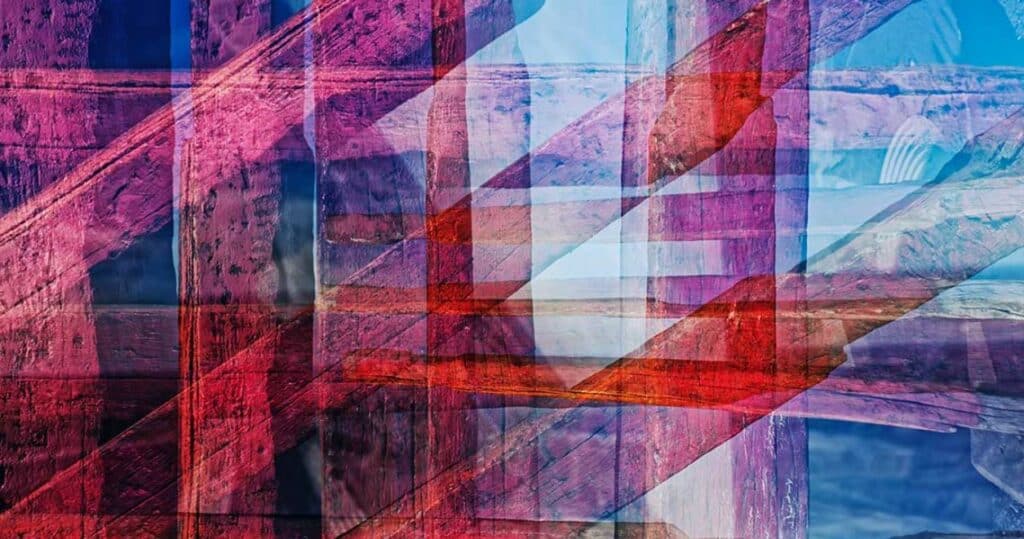“Brushstrokes of Genius: Picasso’s Top 10 Iconic Masterpieces”
In this article about the “Most Famous Pablo Picasso Paintings” we’ll take a fun dive into the world of this great artist. We’re about to look at the top 10 paintings that have left a lasting mark on the colorful canvas of art history.
“Pablo Picasso” is the first name that comes to mind when we talk about modern art. He wasn’t just an artist; he was a real leader in the world of painting and creativity. Picasso’s art is like a colorful tapestry. It is known for being new, influential, and having an everlasting effect on the art world. Picasso’s artistic journey is nothing short of amazing, from his early days as a very talented young artist to his later years as a revered master. Let’s start this artistic journey together!
Pablo Picasso: Master of Modern Art
Pablo Picasso was one of the 20th century’s most influential artists. He was born in 1881 in Málaga, Spain, and he died in 1973 in Mougins, France. Picasso was a very busy artist who made more than 50,000 paintings, sculptures, drawings, prints, and ceramics during his lifetime.
Picasso is best known for his groundbreaking cubist paintings, which he started with Georges Braque in the early 1900s. Cubism was a revolutionary art movement that broke away from the traditional ways of painting in the West by showing things from different points of view at the same time. Picasso’s cubist paintings have broken-up shapes, geometric shapes, and bright colors.
Picasso worked in a variety of styles, including surrealism, Expressionism, and Neoclassicism, in addition to Cubism. He was always trying new things and pushing the limits of art. Picasso’s paintings are known for being unique, creative, and able to make people feel things.
Top 10 Most Iconic Pablo Picasso Paintings
Pablo Picasso, whose name is often used as a synonym for modern art, left an indelible mark on the history of art with his incredible talent and new ways of painting. The wide range of art he made shows how he was always able to change and push against what people thought was normal. Here are the top 10 most famous Pablo Picasso paintings, which have influenced many people over the years and changed the way modern art looks.
1. Les Demoiselles d’Avignon

Les Demoiselles d’Avignon is one of the famous Pablo Picasso paintings, a big oil painting on canvas of five naked women who work as prostitutes. People think of the painting as a groundbreaking piece of art because it broke away from the traditional rules of Western art and paved the way for Cubism.
Highlights: Les Demoiselles d’Avignon
| Aspects | Description |
| Year of Creation: | 1907 |
| Art Movement: | Cubism |
| Medium: | Oil on canvas |
| Dimensions: | 8′ 6″ x 7′ 8″ (256.5 x 233.7 cm) |
| Technique Used: | Cubism, which breaks things into geometric shapes and planes |
| Location: | Museum of Modern Art, New York City |
| Influences: | Iberian sculpture, African masks, and Cézanne’s paintings |
2. Guernica

Guernica is a big oil painting on canvas that shows the Spanish Civil War bombing of the Basque town of Guernica. People think that the painting is one of the most important pieces of anti-war art ever made because of how strongly it condemns war and violence.
Highlights: Guernica
| Aspects | Description |
| Year of Creation: | 1937 |
| Art Movement: | Modern art |
| Medium: | Oil on canvas |
| Dimensions: | 3.49 meters × 7.76 meters (11.45 feet × 25.46 feet) |
| Technique Used: | Cubism, Expressionism |
| Location: | Museo Nacional Centro de Arte Reina Sofía, Madrid, Spain |
| Influences: | Spanish Civil War, bombing of Guernica, Picasso’s own political beliefs |
3. La Vie

La Vie is an oil painting on canvas that shows a young woman holding a baby. The painting is thought to be one of Picasso’s most important works from his Blue Period. It shows a mother and child in a way that is sad and moving.
Highlights: La Vie
| Aspects | Description |
| Year of Creation: | 1903 |
| Art Movement: | Proto-Cubism |
| Medium: | Oil on canvas |
| Dimensions: | 54 x 72.5 cm |
| Technique Used: | Cubism, Divisionism |
| Location: | Cleveland Museum of Art, Cleveland, Ohio, USA |
| Influences: | Henri de Toulouse-Lautrec, Edvard Munch |
4. Maquette for Guitar

Maquette for Guitar is a bronze sculpture of a guitar that looks broken up and Cubist. People think that this sculpture is one of the most important pieces of cubist sculpture, and it’s a great example of how Picasso could turn ordinary things into works of art.
Highlights: Maquette for Guitar
| Aspects | Description |
| Year of Creation: | 1912 |
| Art Movement: | Cubism |
| Medium: | Cardboard, paper, string, and wire |
| Dimensions: | 21.4 x 17.5 x 8.3 cm |
| Technique Used: | Assemblage |
| Location: | Museum of Modern Art, New York |
| Influences: | African art, Iberian sculpture, and Cézanne’s paintings |
5. Glass of Absinthe

In Glass of Absinthe, an oil painting on canvas, a glass of absinthe is sitting on a table. People think that this painting by Pablo Picasso from his Synthetic Cubist period is one of his most important works. It’s a great example of how he could use simple geometric shapes to make a composition that is both complicated and beautiful to look at. This painting, like many others by Pablo Picasso paintings, shows how good he was at changing the rules of art and pushing the limits of creativity throughout his long and successful career.
Highlights: Glass of Absinthe
| Aspects | Description |
| Year of Creation: | 1914 |
| Art Movement: | Cubism |
| Medium: | Bronze and absinthe spoon |
| Dimensions: | 8 7/8 x 5 x 2 1/2 in. (22.5 x 12.7 x 6.4 cm) |
| Technique Used: | Bronze casting and painting |
| Location: | Metropolitan Museum of Art, New York City |
| Influences: | African sculpture, popular culture, and the absinthe ritual |
6. Three Musicians

In the Cubist style, Three Musicians is an oil painting on canvas that shows three musicians playing their instruments. People think that this painting is one of Picasso’s most important works from his Synthetic Cubist period. It is a great example of how he could use simple geometric shapes to make a complex and visually appealing composition.
Highlights: Three Musicians
| Aspects | Description |
| Year of Creation: | 1921 |
| Art Movement: | Synthetic Cubism |
| Medium: | Oil on canvas |
| Dimensions: | 203.2 x 243.9 cm |
| Technique Used: | Fragmentation, multiple viewpoints, geometric shapes |
| Location: | Museum of Modern Art, New York |
| Influences: | African art, Iberian art, Cézanne |
If the works of Pablo Picasso captivate you, you’ll also love diving into the rich world of Baroque art. Check out our article on the Most Famous Baroque Paintings You Need to Know to get a brush with timeless grandeur and artistic flair!
7. The Weeping Woman

The Weeping Woman is a collection of oil paintings on canvas of a woman crying. People think that these paintings are some of Picasso’s most moving and powerful works. They show how sad and angry the artist was about the Spanish Civil War.
Highlights: The Weeping Woman
| Aspects | Description |
| Year of Creation: | 1937 |
| Art Movement: | Cubism |
| Medium: | Oil on canvas |
| Dimensions: | 61 x 50 cm (24 x 19.7 in) |
| Technique Used: | Analytical Cubism |
| Location: | Tate Modern, London |
| Influences: | The Spanish Civil War, Dora Maar |
8. Girl before a Mirror

Girl Before a Mirror is an oil painting on canvas of a young woman looking in a mirror. The painting is thought to be one of Picasso’s most important Surrealist works. It is a complex and mysterious look at the identity and sexuality of women
Highlights: Girl before a Mirror
| Aspects | Description |
| Year of Creation: | 1932 |
| Art Movement: | Cubist-Modernist |
| Medium: | Oil on canvas |
| Dimensions: | 64 in. x 51 1/4 in. (162.6 cm x 130.2 cm) |
| Technique Used: | Cubism |
| Location: | Museum of Modern Art, New York City |
| Influences: | African masks, Iberian sculpture, and the artist’s own mistress |
9. Dora Maar au Chat

In the oil painting Dora Maar au Chat, Picasso’s lover Dora Maar is shown with a cat. The painting is thought to be one of Picasso’s most important late works. It is a moving and personal portrait of a complicated and interesting woman.
Highlights: Dora Maar au Chat
| Aspects | Description |
| Year of Creation: | 1941 |
| Art Movement: | Cubism |
| Medium: | Oil on canvas |
| Dimensions: | 128.3 cm x 95.3 cm |
| Technique Used: | Multiple layers of brushstrokes and faceted planes |
| Location: | Currently in a private collection |
| Influences: | Picasso’s relationship with Dora Maar, the Second World War |
10. The Bull

The Bull is a bronze sculpture that looks like a stylized, simple bull. People think that the sculpture is one of Picasso’s most important works from the end of his life. It is also a powerful and well-known symbol of Spain.
Highlights: The Bull
| Aspects | Description |
| Year of Creation: | 1942 |
| Art Movement: | Surrealism |
| Medium: | Assemblage (bicycle handlebars, bicycle seat, and a cardboard box) |
| Dimensions: | 33.2 x 45.3 centimeters |
| Technique Used: | Assemblage |
| Location: | Musée Picasso, Paris, France |
| Influences: | Spanish folk art, African art, and Cubism |
Are you ready for a trip full of art? With our guide to the Top 20 Must-Visit Art Destinations Around the World, you can learn more about the exciting world of art. From awe-inspiring galleries to amazing street art, you won’t want to miss this global art tour!
Pablo Picasso’s career as an artist was an amazing journey through the constantly changing landscape of modern art. Pablo Picasso’s ability to constantly change and challenge the status quo in his paintings led to an extraordinary body of work that still inspires and fascinates art lovers and scholars. Picasso did a huge amount of work, and the paintings we’ve talked about here are just a small part of it. Every one of them shows how smart he was.
FAQ
How did Picasso’s different phases as an artist add to his legacy?
Picasso’s different artistic periods, such as the Blue Period, the Rose Period, and Cubism, show how he was always able to come up with new styles and try them out. These times added to his legacy by showing how versatile he was and how willing he was to push the limits of art.
Where can I see these well-known paintings by Picasso in person?
Many of Picasso’s most famous works are in museums and galleries all over the world. The Museo Reina Sofia in Madrid, the Museum of Modern Art (MoMA) in New York City, and the Picasso Museum in Barcelona are all places that stand out.
How did Picasso’s life affect the way he made art?
Picasso’s personal life, including his relationships with women and his experiences during times of war, had a big effect on his art. His paintings often showed how he felt, what he had been through, and who he was with, making them very personal and telling of his life.





